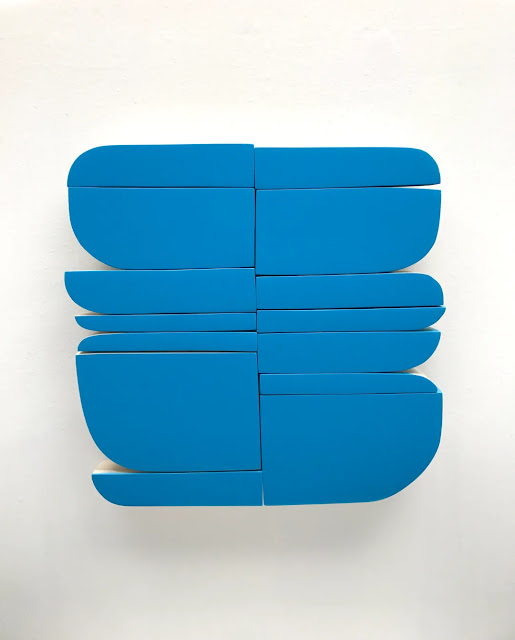I admit I spilled a few big blue tears watching Kamala at the Atlanta rally last night. I was pretty devastated when someone called to tell me about Biden days ago... I was busy watching my silly disaster movies on YouTube ... I think it was some crocodile swamp movie and had completely missed his announcement. But by that afternoon, I felt pretty good about the road the dems were about to turn onto. And in two days, I was positively gleeful.
I have not felt so lifted since Obama ... I feel some hope. Bri told me the other day that I might regret kicking all of my trump-cult family and friends to the curb. And I explained this was NOT about politics ... I never questioned that try voted for Bush, or that they were republicans before. I question their ability to spot an immoral, lying, psychopath trying to sell them a hat, T-shirt or gold shoes made in China! If you can't see that this snake oil salesman is as bad as a human can get ... then I would prefer not to be friends or family with you. That is how I tried to explain it to Bri.
Anyhoo ... I am uplifted.
The grandkids and I have been a couple of shopping sprees of late and I think they are going to have to end. But, what fun we had. The house is a wreck. Matt has been demolishing the old deck getting ready to build a new one. It goes from hot to rain here lately. I can't decide which on I like more. I am sitting in the sun more often and getting some color back in my face and arms.
I have been having these intense remembrances of smells. Today I had one ... Mom in the driver's side of the car, opening the window to talk to me on a very hot Texas summer day ... and the smell of cigarettes and her lovely Ralph Lauren perfume. I could almost smell it all over again! Why would they discontinue this? I have only been wearing Banana Republic W cologne for a couple of years. If I could, I would just go smear a bunch of freshly cut grass as my cologne!
Oh My ... I was just looking up Ralph Lauren perfume and it looks like my favorite has been discontinued! Luckily, I still have a full bottle. On eBay is selling for $300-450!
And when I walk out the front door, smelling Texas Privet blooming! Somewhere in my childhood these were prominent because this scent really stays with me. Which is why I have it planted all over my yard!(Texanum Japanese Privet features showy panicles of lightly-scented white flowers at the ends of the branches in mid spring. It has dark green foliage. The glossy pointy leaves remain dark green throughout the winter. The fruit is not ornamentally significant.)
Haven't really been watching the Olympics but did manage to catch this silly right-wing outrage about the Last Supper mix-up.
Something a friend from msnbc.com days, Bobbi Nodell wrote for the Seattle Times ... JD Vance is wrong: Childless people have a lot to contribute. JD Vance is the gift that keeps on giving. I think his comments on childless women is the worst. I know many, many women who would have liked to have children but it just did not work out that way.
I’m single without kids. Not by choice, but through a series of events involving my marriage, health and career.
According to U.S. Sen. JD Vance, I’m miserable and have no stake in the country.
Vance’s interview with Tucker Carlson in July 2021 resurfaced when he was announced as former President Donald Trump’s vice presidential pick.
“We are effectively run in this country, via the Democrats, via our corporate oligarchs, by a bunch of childless cat ladies who are miserable at their own lives and the choices that they’ve made and so they want to make the rest of the country miserable, too,” Vance told Carlson when he was running for Ohio’s U.S. Senate seat. “It’s just a basic fact: If you look at Kamala Harris, Pete Buttigieg, AOC [Alexandria Ocasio-Cortez], the entire future of the Democrats is controlled by people without children.”
Vance went on to say that those who “actually have kids” are “the people who have a more direct stake in the future of this country.”
Vance’s comments struck a raw nerve with all us childless women. So many people have expressed outrage, and rightfully so. Of all the comments I have heard from candidates, this makes my Top 10 of most insensitive.
I helped my friend, Robin at her booth at the Seattle Art Fair last Friday. That was fun to see art and people, all in one building.
Andrew Zimmerman is fitting it all together and it delights me.
"I fondly remember working with my dad in his wood shop as a young child.
Cutting the parts and assembling the pieces into a bench or a table
revealed to me a magical journey from a slab of wood to a finished
product. More importantly, I experienced the joy and endless
possibilities of making things by hand.
In 1980, when I was
twelve years old, my parents took me to see the Picasso retrospective at
The Museum of Modern Art. I was deeply moved by Picasso’s unique
vision and specifically how he constructed his paintings out of a
distinct visual language of individual passages or parts. That was the
moment when I decided to become an artist."






































